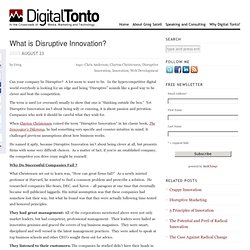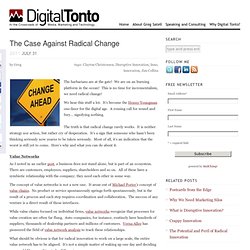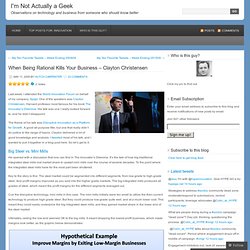

The Big Idea Myth. Do you have a big idea?

Is it really, really, really big? Huge even? We are idea machines. We come up with new ones constantly, usually at odd times and in strange places. There’s probably nothing more romantic than someone in love with an idea. However, many people with great ideas have been lost to history, while some have become famous for ideas that others had too. Gregor Mendel’s Big Idea Gregor Mendel, an Austrian monk, had a big idea. It wasn’t until decades after his death that his idea came to the fore and he became considered the “father of genetics.” Thomas Kuhn, in his classic The Structure of Scientific Revolutions, pointed out that, although history usually records that one person in connection with a particular breakthrough, a closer look usually reveals that several people could rightly claim credit for important discoveries. We all know Albert Einstein, but few have heard of David Hilbert, who published his theory of general relativity at almost the same time.
. - Greg. What is Disruptive Innovation? Can your company be Disruptive?

A lot seem to want to be. In the hypercompetitive digital world everybody is looking for an edge and being “Disruptive” sounds like a good way to be clever and beat the competition. The term is used (or overused) usually to show that one is “thinking outside the box.” Yet Disruptive Innovation isn’t about being wily or cunning, it is about passion and privation. Companies who seek it should be careful what they wish for. When Clayton Christensen coined the term “Disruptive Innovation” in his classic book, The Innovator’s Dilemma, he had something very specific and counter-intuitive in mind. He named it aptly, because Disruptive Innovation isn’t about being clever at all, but presents firms with some very difficult choices. Why Do Successful Companies Fail ? What Christensen set out to learn was, “How can great firms fail?”
They listened to their customers: The companies he studied didn’t have their heads in the sand. A Surprising Answer. The Case Against Radical Change. The barbarians are at the gate!

We are on an burning platform in the ocean! This is no time for incrementalism, we need radical change! We hear this stuff a lot. It’s become the Henny Youngman one-liner for the digital age. A rousing call for sound and fury… signifying nothing. Value Networks. Disruptive versus Radical Innovations. Clayton Christenson’s seminal The Innovator’s Dilemma is now 10 years old, and its central idea of “disruptive innovation” is now part of the everyday language of innovation.

Recently, I finally read the book after having loosely tossed the term around for a few years. I was shocked to discover that I had misunderstood the concept and made glib assumptions based on sloppy journalistic references. Properly penitent, I began using the term correctly and discovered, to my further shock, that nearly everybody else around me was also using the term incorrectly. Top 10 Clayton Christensen Insights – World Innovation Forum. Taking a slightly different approach than other World Innovation Forum bloggers, I’ve distilled the first 90 minutes with Clayton Christensen down into these Top 10 Insights:

When Being Rational Kills Your Business – Clayton Christensen. May 11, 2009 by Hutch Carpenter Last week, I attended the World Innovation Forum on behalf of my company, Spigit.

One of the speakers was Clayton Christensen, Harvard professor most famous for his book The Innovator’s Dilemma. His talk was one I really looked forward to, and he didn’t disappoint. The theme of his talk was Disruptive Innovation as a Platform for Growth. A good all-purpose title, but one that really didn’t do justice to the range of topics. Big Steel vs. Six Keys to Building New Markets by Unleashing Disruptive Innovation. Managers today have a problem.

They know their companies must grow. But growth is hard, especially given today's economic environment where investment capital is difficult to come by and firms are reluctant to take risks. Managers know innovation is the ticket to successful growth. But they just can't seem to get innovation right. When companies keep improving their existing products and services to meet their best customers' needs, they eventually run into the "innovator's dilemma. " Recent research indicates these problems are systemic. Managers typically grow impatient when we tell them this. When "Creative Destruction" Destroys More than It Creates - Chris Zook. When changes in the natural environment accelerate, so do the extinction rates of the Earth’s creatures.

It happened to the dinosaurs and again to many species during the Ice Age. Many scientists believe we may be entering another such period . The same happens in business, and we are clearly entering a period where the extinction of the slow, the inflexible, and the bureaucratic is about to happen in record numbers. My colleagues and I at Bain & Company have been tracking this for forty years, and we have never seen companies losing their leadership positions as quickly as they are today. A list of the top 20 banks today contains only seven that were on the list a decade ago.